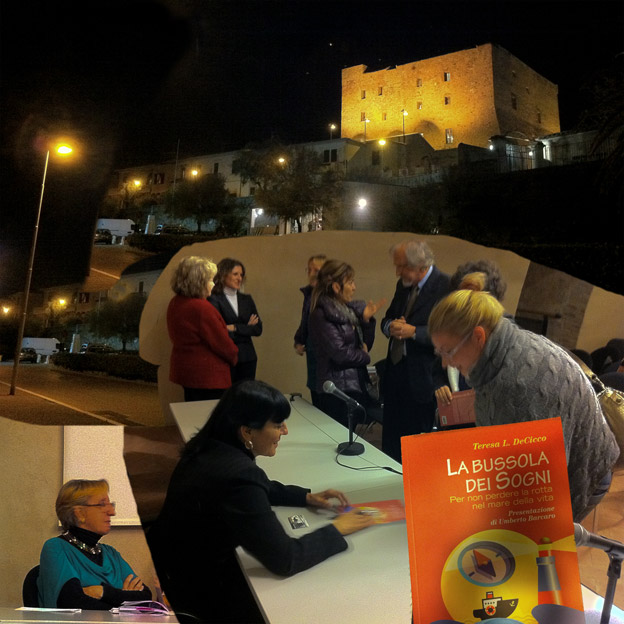It has been recognized in scientific writings that dream interpretation can be extremely valuable. Anyone who uses, teaches or practices dream interpretation will certainly know this by the life-changing insights that occur with dream work. Unfortunately, it is still the case that most practitioners do not know how to actually do dream work or dream therapy, they don't know where to get this training, and even when clients/patients ask for dream work they are reluctant to work with dreams. Even the terminology is confusing-dream work, dream interpretation, dream therapy, what does it all mean? Though they all mean the same thing and lead to the same valuable goal, the field is still not well versed.
Over the past 4 years I have worked diligently on designing a dream interpretation tools that could be used in therapy, or, for self-guided dream work. I started with groups of patients and worked on a dream interpretation tool, tested it, re-tested it, tested it again, tested it against control groups, tested it again, until I could predict the tool led to discovery. My hope was that I would have a tool that clinicians who were not specifically trained in dream interpretation could begin using it in practice. Anyone who wanted to simply pick it up and use it, with little training, could do so and find discovery.
The result has been that this tool which I call The Storytelling Method of Dream Interpretation (DeCicco, 2006; 2007) could be easily used, shared in groups, easily taught and, used between therapy sessions by clients/patients. It was the beginning of building the knowledge of dream work for people who were novice. Clinicians began using it because clients had early success and it was easy to use and to teach. Researchers began using it because it provided an empirical protocol for dream work and people in general began using it because it helped them tap into the mystery of dreaming quickly and easily.
I am hoping that the method is helping to close the gap between wanting to add dream work into a practice and not knowing where to begin. The method also allows for safety and privacy while leading to discovery (80% of the time!). The Storytelling Method connects dream imagery directly to waking day issues. Of course dreams are very complex and therefore, more than one interpretation is needed to tap into the emotions, hopes, desires, longings and other mysteries that dreams represent.
Once The Storytelling Method was in place, well-tested and working well, I began the second method of dream interpretation which would tap directly into the emotions that were generating a dream: The 2A Method, which I will discuss in my next blog...Putting Dream Work Into Practice: Step II
Friday, March 13, 2009
Putting Dream Work Into Practice: Step I
Labels:
dream therapy,
dream work,
The Storytelling Method,
therapy
Subscribe to:
Post Comments (Atom)


Usando in psicoterapia lo Storytelling ho visto che può avere un impatto potente.
ReplyDeleteLe considerazioni , le analisi , la storia ecc. che fà la persona sono magari completamente diverse da quelle che io farei . Il percorso cambia ( e questo ha il potere sempre di sorprendermi )
rispetto a quello che io , come terapeuta , (naturalmente perché mi sembra indicato dalla persona ) lo avrei aiutato a percorrere.
Ma la persona arriva a cambiare , attraverso un lavoro sui propri sogni che io non posso a volte capire .
Un esempio :
una donna intorno ai 50 anni con una forte depressione esogena , causata dall’abbandono del convivente , che ha lavorato in psicoterapia sui propri sogni tramite lo Storytelling comincia prima nelle parole che associa alle immagini del sogno e nella storia che costruisce a parlare
di “ bambini “.
Poi comincia proprio nel sogno a vedere bambini ( dapprima neonati) come immagini associate al suo stato d’animo che “rinasce “ e “ cresce”.
Dalla depressione profonda passa alla speranza e alla tranquillità…
The Storytelling Method in Italian, English or Spanish is promising to be a very valuable tool in therapy. The method is very good for people novice to dream interpretation so it is likely that they will continue to use it. It is easy to adminster so clinicians can take the method and put it into practice easily and effectively. Perhaps the most valuable feature is that described by Donatella: people are able to have discovery and link it directly to their waking day life. After all, this is the whole point of dream interpretation since we want to guide people to a valuable insight relating to their life. With this insight they can begin to see the world differently, find new solutions to their situations and eventually find a life path that is positive for them. As in Donatella's example, a woman with depression was able to see a different aspect of her life with The Storytelling Method (DeCicco & Donati, 2008)and with this, her mood could now shift. The Method's ability to bridge dream imagery to one's own deep, profound personal meaning is it's greatest promise.
ReplyDelete